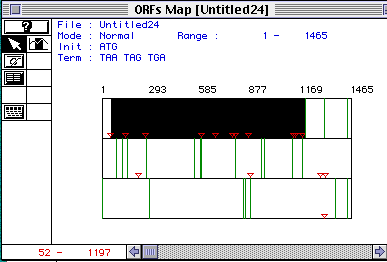
The cDNAs of the MCK gene from these
five organisms were obtained from Genbank search.
This is a diagram of the possible
ORFs of the Gallus gallus cDNA. The red triangles indicate possible start
codons and the green lines indicate possible stop codons. The longest ORF
is 52-1197.

This is a table of the amino acid content of the Mitochondrial CK protein. Note the Molecular Weight of 43109.94 Daltons.
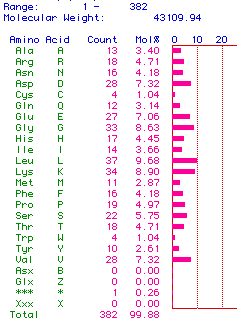
This is a Kyte and Doolittle hydrophobicity
chart. At no point
is the 2.0 threshold for an integral membrane protein reached, so the MCK
protein does not span the mitochondrial membrane.
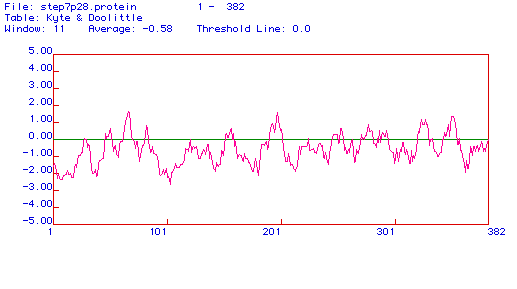
This is a Hopp and Woods hydrophobicity
chart. The most hydrophobic
and therefore best potential antibody site on the MCK gene is in the 35-45
region.
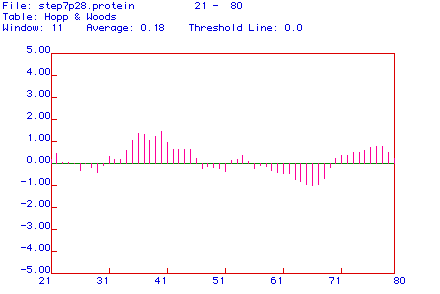
This is a Chou, Fasman and Rose
prediction of the MCK secondary structure. There are 17 helixes and
17 sheets. To compare this to the Rasmol image of the G. gallus MCK
protein, click
here.
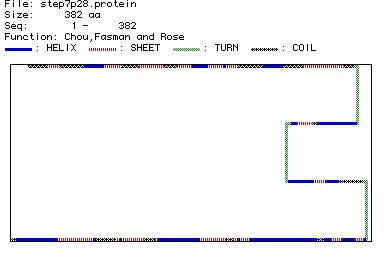
This is a Multiple amino acid alignment of the cDNAs of the five species examined. Note particularily that the rabbit lacks 35 of the first 40 amino acids.
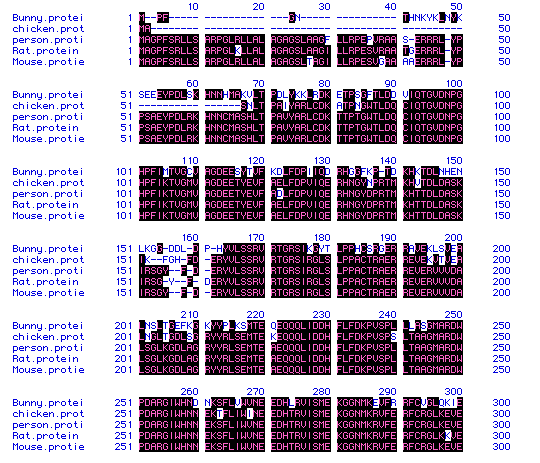
To compare this with the cDNAs
from each organism, click on the Latin names.
To find the genomic or cDNA sequences of equivalent proteins in these five organisms:
click
here for Gallus gallus
click
here for Oryctolagus cuniculus
click
here for Rattus rattus
click
here for Mus musculus
click
here for Homo sapiens
This is a Higgins phylogentic tree of these five species based on the MCK gene. That the two rodents are most similar is expected The calculated phylogenetic distance between the lagomorph and the other mammalia is striking.

Go back to my home page:
click
here
Go back to the Biology 304
main page
click here
Go back to the Davidson Biology
Department main page.
click
here.
© Copyright 2000 Davidson, NC 28036
Send comments, questions, and suggestions to:
ancampbell@davidson.edu